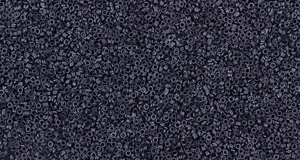The Price of Predatory Marketing on Older Adults: A Perspective on Prevagen Potency
By
2021, Vol. 13 No. 09 | pg. 1/1
IN THIS ARTICLE
KEYWORDS
AbstractThe calcium-binding protein apoaequorin has been studied for its possible indication to improve human cognition and memory. Faculty at Quincy Bioscience developed Prevagen with this in mind, claiming its apoaequorin-formulated supplement may decrease age-related memory loss. A summary of the pathway orally administrated apoaequorin would take in order to penetrate the central nervous system (CNS), with particular focus on digestive elements and blood-brain barrier (BBB) permeability is presented. A discussion of the ethicality of the research and marketing practices of Quincy Bioscience in the commercial sale of Prevagen is given as well. IntroductionApoaequorin's Use for Memory Loss MitigationResearchers Osamu Shimomura, Martin Chalfie, and Roger Tsien won Nobel prizes for the discovery of glowing proteins in fish, including aequorin's role in jellyfish Aequorea Victoria's bioluminescence. Aequorin is a photoprotein with three calcium-binding sites that partake in aequorin's catalytic ability to produce bioluminescence. While our knowledge of marine biochemical processes has expanded because of their research, less consideration was given to a pharmacological application of aequorin's calcium-binding capabilities. Recent studies have been conducted to test apoaequorin, a subunit of aequorin, and its calcium-binding abilities for potential uses in medically regulating pathological calcium toxicity and calcium-mediated signaling pathways. Calcium and Apoaequorin's Potential Mechanism of ActionAs a player in cellular signaling, calcium presents a role in regulating intracellular processes such as muscle contraction, nerve impulse signaling, cell fluid balance, and more.[1] The primary consideration behind these mechanisms is the tight regulation of the calcium concentration gradient and calcium's role as a cofactor for many enzymes. The process of regulating calcium is accomplished by calcium pumps, channels, and binding proteins, allowing the background concentration of calcium within the cell to remain low. By maintaining a low nanomolar concentration, even minor increases in calcium levels can result in a relatively large change in the calcium concentration gradient, resulting in a variety of cell activities.[2]A specific pathological example of calcium toxicity in cellular signaling is the dysfunction of NMDA receptors, a prominent glutamate receptor, and calcium ion channel in synaptic transmission. In pathological circumstances, NMDA does not respond to the negative feedback of high intracellular calcium levels, leading to excessive amounts of calcium in the cell.[3] Calcium overload results in the disruption of essential cellular pathways or activation of pathways leading to neuronal death. For example, cellular imbalance of calcium concentration impedes the function of the amyloid precursor protein, and β-amyloidaccumulates, which is associated with Alzheimer's Disease.[3] Calcium toxicity may also arise due to extensive coupling of calcium with reactive oxygen species (ROS), such as H₂O₂, O₂-, and free radicals within the cell. High doses of ROS lead to the activation of cell death pathways. The charged and reactive nature of these species is also degradative to cellular constituents like lipids, proteins, and nucleic acids. Because of ROS coupling, high levels of calcium potentiate oxidative stress and are believed to play a role in ischemic cell death.[4] It can be theorized that by binding free calcium ions, the presence of apoaequorin will result in decreased ischemic cell death. Calcium is essential to memory formation and maintenance as calcium facilitates the development of dendritic spines through cellular signaling and transcriptional regulation.[5] One mechanism of dendritic growth is initiated when calcium enters neurons through voltage-gated calcium channels and NMDA receptors. Calcium then binds to calmodulin, a calcium-binding protein triggering a cascade of signaling events, notably calcium/calmodulin-dependent protein kinases (CaMKs).[5] Two primary examples are CaMKII that has been demonstrated to increase dendritic development through interaction with actin, a major cytoskeletal protein[6], and CaMKIV that has been postulated to promote dendrite growth[5] transcriptionally. Apoaequorin has been compared to calmodulin for similarities in function and size. Calmodulin contains four sites to bind calcium and is vital in modulating calcium in intracellular signaling pathways. Thus, it is logical to assert that calcium-regulatory proteins could mimic intracellular players like calmodulin when taken as a supplement. Though Quincy Bioscience has proposed no formal mechanism, research suggests that apoaequorin would be a good supplement for memory loss by two possible mechanisms: 1) being a calcium buffer in cases where high calcium levels could be toxic to hippocampal neurons. That is, it is possible that apoaequorin could bind calcium in the extracellular or intracellular space of the brain, decreasing abnormal calcium dynamics into neurons and diminishing the initiation of cell death pathways. Indeed, Detert and colleagues [8] found that incubation of hippocampal neurons with apoaequorin resulted in the protection of neurons from oxygen-glucose deprivation. This is similar to one of NAMENDA's proposed mechanisms of action, a drug used to treat Alzheimer's Disease. NAMENDA antagonizes the glutamate-gated cation NMDA receptor in neurons, reducing the intracellular influx of calcium.[9] Moreover, 2) apoaequorin operates similarly to calcium-binding proteins such as calmodulin to regulate intracellular pathways of memory formation. While such theoretical mechanisms exist, both mechanisms are contingent on the dosage of apoaequorin reaching the site of action, the central nervous system (CNS). The second also relies on apoaequorin infiltrating neurons to become available intracellularly. Prevagen and its BioavailabilityPrevagen is a $60 dietary supplement directed to be taken once daily in oral capsule form. Prevagen, though not deemed a drug by the FDA by definition, and not found on clinicaltrials.gov as part of any past or present clinical trial, is strongly suggested it can improve memory and prevent memory loss associated with aging. For Prevagen to be effective as an oral supplement, it must first survive digestion and be absorbed into the bloodstream.[10] After this, it would have to cross the blood-brain barrier (BBB).[11] Finally, to efficiently decrease ischemic cell death or affect positive change in memory formation, Prevagen would have to bind a sufficient amount of calcium within the hippocampus neuron region, the region of the brain associated with learning and memory.[12] The ScienceSurviving DigestionLike any orally administered drug, the efficacy of a dose of Prevagen could be limited by metabolism.[13] The first obstacle for the absorption of a protein such as apoaequorin via oral administration is withstanding gastric acidity and digestive enzymes. The most important enzyme in protein digestion is pepsin. Pepsin is in the endopeptidase class of enzymes, lysing internal peptide bonds of proteins. Pepsin is converted from its inactive precursor, pepsinogen, by the release of H+ from HCl in gastric juice, making the stomach a prime environment for the degradation of proteins like apoaequorin. In a study exposing apoaequorin to a simulated stomach environment, it was concluded that apoaequorin is sufficiently and efficiently broken down by pepsin within minutes.[14] If not broken down by enzymes in the gut, apoaequorin remains subject to enzymes in the liver as well as metabolism in other cells.[10] For Prevagen to function as per its theoretical mechanisms of action, it would have to maintain its protein domains to bind calcium. In general, for substances targeting the CNS, the concentration of the substance intact is reduced substantially due to the various metabolic processes that take place during digestion and in the liver that degrade or alter exogenous compounds. Typically, by the time any drug arrives at the site of action in the brain, its bioavailability could be too low to produce a significant pharmacological effect.[15] This is almost certainly true for a protein supplement such as apoaequorin. Apoaequorin, by oral dosage, is more likely to be broken down into its amino acid constituents by digestive enzymes and used for the assembly of new peptides. However, studies by Morrill and colleagues suggested that cholesterol could protect proteins such as calmodulin and apoaequorin during transport through the gut and may improve bioavailability.[16] Crossing the Blood-Brain BarrierAssuming apoaequorin's structural integrity is intact after traversing the acidic conditions and enzymatic activity of the gut, liver, and other cells, apoaequorin must lend itself to be transported by the blood to the brain and cross the BBB, passively or actively. It is likely by apoaequorin's hydrophilicity and considerable mass that it would not cross the BBB through passive transport. For a molecule to target the central nervous system, it typically has a molar mass less than 400-500 Da and is lipophilic,[11] similar to molecules like caffeine or nicotine that can penetrate the BBB. Apoaequorin, in contrast, is a hydrophilic protein (having many charged or polar amino acids) with a considerable mass of 22,248 daltons. It is unlikely this protein can penetrate the BBB. When considering a form of active transport of apoaequorin across the BBB, reason fails to suggest that a specialized transport mechanism (i.e., transmembrane transporter) exists. Humans likely have not evolved a mechanism to transport an exogenous and momentous compound like apoaequorin naturally synthesized in jellyfish. No current research on apoaequorin pinpoints a receptor or transporter in the blood-brain barrier capable of such transport. Considering Concentration Requirements of Pharmacologically Active ApoaequorinAssuming the dose of apoaequorin can enter the CNS at full concentration, it is still unlikely to induce any change at the cellular level. The average brain is about 1.26 L, and its extracellular space (ECS) comprises about 20% of its volume.[17] A dose in a capsule of Extra Strength Prevagen contains 20 mg apoaequorin, having a 3.57 x 10-3 mM concentration in the ECS if the dose were to arrive there at maximal concentration. This would theoretically bind three times as much calcium due to apoaequorin's three binding sites and bind approximately 10.7 x 10-3 mM calcium in the ECS. Given an approximate 2.0 mM of calcium resides in the ECS of mammalian brains,[18] this would reduce the concentration to about 1.989 mM, insignificantly changing the extracellular concentration (Calculation 1). This eliminates the first mechanism of Prevagen introduced with apoaequorin working as a buffer of extracellular calcium to prevent the toxic effects of calcium influx.
Thus, one dose of Prevagen would yield maximum calcium change to ~1.989 mM in the ECS However, one could speculate that if the dose were to arrive at the CNS and be available intracellularly, apoaequorin could alter calcium signaling pathways implicated in memory. In an average male brain weighing in at around 1400 g,[19] intracellular fluid (ICF) occupies brain space at about 0.8 mL/g of brain,[20]. This would result in about 1.0 L of ICF in the brain. The dose of apoaequorin in Extra Strength Prevagen previously considered would maximally be 0.8 μM in the ICF. With three calcium-binding sites, a single dose could change the calcium concentration by about 2.4 μM calcium. The calcium concentration inside most cells is approximately 0.075 μM.[18] Thus, if apoaequorin could target neurons or glia, a significant buffering effect would occur. However, there is no known mechanism by which such selective targeting could occur. Indeed, calcium-binding to apoaequorin is non-selective, so the molecule would be saturated with calcium prior to arriving in the CNS due to the high extracellular calcium levels that exist. DiscussionAccording to the FDA, a drug is defined as a product designed for diagnosis, recovery, rehabilitation, cure, or disease prevention. Prevagen is intentionally categorized as a supplement that does not need approval from the FDA to be marketed to the public. Nevertheless, Quincy Biosciences commercializes Prevagen to the public as appropriate for those with mild memory loss due to the effects of aging. They advertise on their website: "Prevagen has been clinically shown to help with mild memory loss associated with aging."[RG1] However, there is limited clinical or basic science evidence to substantiate that statement.[21] The company would appear to be targeting the fears of the vulnerable minds in the older community. Research PracticesPrevagen is advertised as a supplement that is capable of improving memory and helping with memory loss associated with aging, with the company going as far as to claim that these findings are clinically proven. However, when investigating these claims, there are concerns regarding these reports.First is that the basis of their clinically proven claims is a single study, the Madison Memory Study.[22] This study was conducted by researchers at Quincy Bioscience, the same biotechnology company responsible for developing Prevagen. This would be an apparent conflict of interest. Because of commercial interests and confirmation bias, it is unclear whether this research is to be trusted, especially when it is the only research provided as evidence to support their claims. Further, this study reports no statistical significance in the difference between the control groups and the experimental groups.[22] Therefore, the only study provided as evidence for apoaequorin activity when orally consumed does not fully support their claims. Second, Prevagen makes apparent contradictory claims when providing their safety assessment studies. It was shown that apoaequorin is broken down by digestion,[14] making it unlikely to cause an immune response. This means that when taken as recommended, apoaequorin would not make it to the blood-brain barrier and cross into the extracellular space of the brain as an intact, calcium-binding compound. ConclusionTheir misleading claims in marketing appear to take advantage of and capitalize on the susceptible target audience of older consumers. Advertising, in general, should be truthful and accurate, but especially so when it comes to protected classes based on age, race, gender, certain health conditions, among others. There is at least one court case by the state of New York filed in 2017[23] against the makers of Prevagen, arguing that the company is making deceptive claims that have violated the Federal Trade Commission Act and the laws of the state. The individuals targeted for this marketing are those who are older and may have issues with memory loss or cognitive ability. Research has shown that adults 65 years of age or older consistently had lower levels of literacy in comparison to younger age groups.[24] Because of this, members of this community could be more prone to misinterpreting information. Thus, when presented with false claims of possible remediation, they are more susceptible to accept them as authentic. In an article by Drolet and colleagues [25], the authors describe how older adults can more easily fall victim to this kind of marketing. Some of the reasons explaining this provided by the article include changes in sensory functioning and awareness, as well as the "older consumers experienc[ing] significant declines in cognitive ability that can negatively affect their comprehension of persuasive communications."[25] Although the FTC legally allows it, a higher standard should be expected and enforced when marketing to these older individuals. This includes being extremely clear about what the supplement has been scientifically proven to do and supporting their claims with substantial evidence. A more considerable amount of pharmacological testing would be required to establish that apoaequorin functions as claimed. This would include studies establishing survival of the supplement through digestion, penetrating the blood-brain barrier, or conducting a clinical trial for Prevagen to substantiate their claims. As it stands now, due to calcium playing a role in a plethora of cell functions, it is implausible that apoaequorin would be able to target neuronal brain cells specifically. More experimental testing should be performed before releasing Prevagen to the public as a dietary supplement to ensure its proper function in assuredly aiding memory loss associated with aging. From the current research, it can be concluded that the oral consumption of apoaequorin likely exerts its effect as a placebo as no clear mechanism exists to alter brain function. Can a protein found in jellyfish really improve your memory? These scientists say "No." Press SummaryThis publication intends to present a scientifically based rationale evaluating the use of the dietary supplement, Prevagen. The discourse centers on the impracticality of the supplement itself. It highlights the limited research behind it, finding little evidence that the active ingredient of Prevagen could possess any meaningful biological activity in the human brain. The use of the supplement label has been used to avoid the more traditional clinical trial approach. Even after some years, there appears no effort to perform a double-blinded clinical trial. The FDA should review all compounds that are manufactured for sale on a case-by-case basis and should require higher standards for marketing to vulnerable populations, including older adults. About the AuthorsStephanie Jones is a current undergraduate student and research assistant at the University of West Florida. She will graduate with a bachelor's in biomedical sciences with a minor in mathematics. She aims to continue her education by pursuing graduate school in biology. Gabriela Castaing is an undergraduate student at the University of West Florida. Majoring in biomedical sciences, she plans on furthering her education to pursue a career in dentistry. Liz Teets is a medical scribe and undergraduate student in biomedical sciences at the University of West Florida. After earning her bachelor's, she wishes to pursue medical school. She aims to go to medical school for either pediatric or emergency room care. Jacquelyn Wells is a recent graduate from the University of West Florida's biomedical science program. She is going to apply for master's programs in biochemistry at a nearby university, where she hopes to gain more experience in research. Dr. Rodney Guttmann holds a Ph.D. in pharmacology from the University of Alabama at Birmingham. He currently teaches cell biology at the University of West Florida and conducts research on biomarkers for Alzheimer’s disease. References
Suggested Reading from Inquiries Journal
Inquiries Journal provides undergraduate and graduate students around the world a platform for the wide dissemination of academic work over a range of core disciplines. Representing the work of students from hundreds of institutions around the globe, Inquiries Journal's large database of academic articles is completely free. Learn more | Blog | Submit Latest in Health Science |


















